This market used to earlier take place in Imbaba, but as the city expanded, the camel market was moved to the suburb of Birqash which is at the edge of the Western Desert.
Hundreds of Camels are sold here everyday. But this is definitely not a market for the Animal lover. The animals aren't in pitiable condition, but they could be treated much, much better than they currently are.
Camels from Sudan are brought into Egypt on the 40 day road via Abu Simbel to the market in Daraw. The unsold camels are then loaded into trucks and brought to Birqash after a 24 hour drive. Camels also arrive from the rest of Egypt and sometimes from Somalia. These camels are traded for other livestock or cash and are mostly bought for farm work or consumption.
Photo opportunities abound, if you can get the angles right since the camels are almost monochromatic in color. The traders have wonderfully charactered faces and I would have loved to be able to take close up portraits and talk to them and listen to their stories. Unfortunately as a woman, taking close up pictures of men is not the sanest thing to do. And my Arabic is too limited to have had a proper conversation with them.
As an obvious foreigner, you will be charged entry to the market. (it has a gated entry) 20LE per person. Then they may try to charge you an additional 10LE per camera. Once you enter, you will not face any obvious resentment. The traders are pretty welcoming of foreigners and try to make a buck or so by posing for pictures with them. There were at least 10 other foreigners the day we visited.The only thing to be aware of is to not behave like an Animal Rights Activist and they will pretty much maintain their distance for the most part.
The market extends inside for a distance with sections cordoned off by walls for certain traders. Small single level constructions provide basic housing for traders. The roofs of which are covered with bales of hay. There are basic ramps built for loading and unloading camels from the trucks.
Obviously not all the camels are sold and some of them may not be worth carrying back. Some don't even survive the truck ride to Birqash. Their corpses are carelessly strewn about the desert as you approach the market. There are a few pictures of that at the bottom. Please don't scroll to the end, if you are squeamish.
Thanks to all my online friends who helped me find directions to the market. The best ones were provided by Karim who said Take Cairo/Alex highway to Abu Rawash road. You take a right onto Abu Rawash road which is right before the Carrefour/Dandy mall parking lot. You take this until you reach the end of the road where it intersects with the Mansouriyya Canal road. Take a left onto the Mansouriyya Canal road. Keep going for a ways and start looking for signs, either the suk il gamaal sign or Nimos Farm sign, on the left-hand side of the road. Take left onto small canal road and go until the end where you hit a midaan/circle. There will be a sign pointing towards the suk and it's only a little ways down the road from there. Leaving from downtown on an early Friday morning, this way can get you there in 45 minutes if you use the Mahwar.
Thomas also gave a good alternate route if you are closer to the pyramids
The road that leads there is accessed from right next to the Giza Pyramids, but I can't easily describe how to find it. (Kim's note : at the main circle take the road that goes to Kerdasa/ Mansoureyya) If you ask a couple people in the area, one should point you in the right direction.
Once on this road, you end up following it straight about 20-25 min and then you make a left at the camel market sign (in Arabic) and drive about 1-2 kilometers to the market.
Good luck.
Alex gave me a good tip. He said that the road would make the car smell and it would be better to take a Yellow Cab. While this is extremely true if you take the Imbaba canal route (the road was piled high with garbage on both sides for the most part and quite nauseating even with our windows up and the air conditioning on), the Pyramids, Kerdasa and Abu Rawash routes are more scenic and pleasant and can be done in a regular car.
The Drive through the Nile Delta makes you forget that you are surrounded by the largest desert in the world.Alex gave me a good tip. He said that the road would make the car smell and it would be better to take a Yellow Cab. While this is extremely true if you take the Imbaba canal route (the road was piled high with garbage on both sides for the most part and quite nauseating even with our windows up and the air conditioning on), the Pyramids, Kerdasa and Abu Rawash routes are more scenic and pleasant and can be done in a regular car.
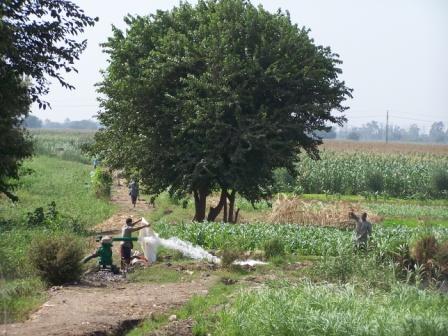 and is very reminiscent of the UP and Punjab fields. The River Nile in the background is of course, unique to Egypt
and is very reminiscent of the UP and Punjab fields. The River Nile in the background is of course, unique to Egypt 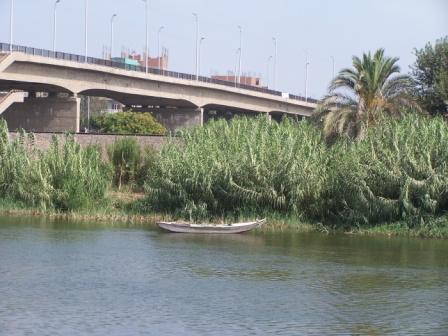


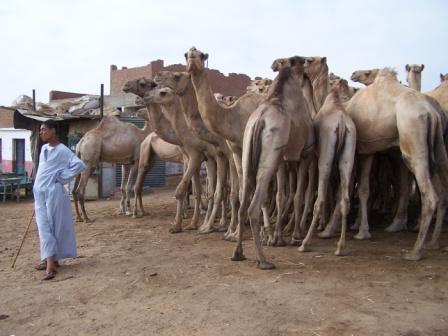
Some of the camels have one of their legs tied to prevent them from running away.


Walled Compound
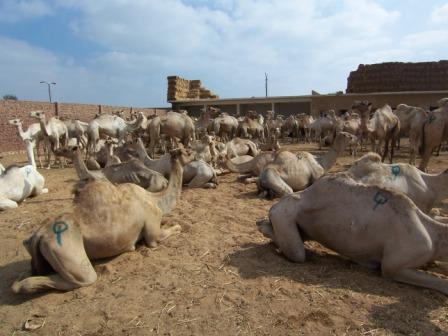
Quality check of camels like horses is done by inspecting the teeth. This one showed us his teeth voluntarily.

Unloading of Camels
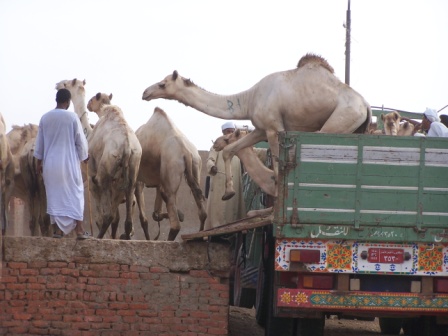
Sold camels being taken away in a pick-up
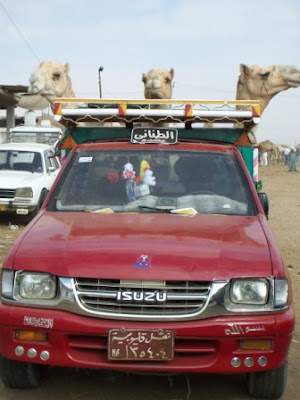
Some of the character filled faces

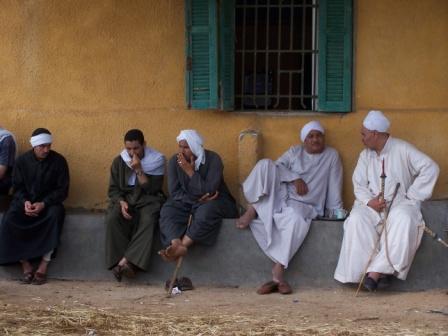
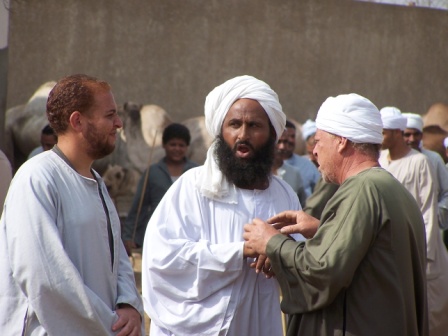
Warning: The pictures below are quite gory.
Please do not scroll down if you are easily upset.


Death is inevitable, but I wish, they could at least dispose the bodies in a less conspicuous and more humane fashion, rather than just leaving it out to the elements.
Some of the facts, come from the Lonely Planet guide for Egypt
Many of the pictures were taken by my husband
Also posted on desicritics.org









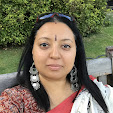

















17 comments:
I found the camel market fascinating - my kids were overwhelmed that camels are SO TALL. Unless you get up close, it is easy to forget that these spindly, skinny animals are actually quite large. Saying that, they do fit quite an amazing bunch in the back of a pick-up!
This sounds like a place to visit. I'll have to mark it down for the future.
lovely camels! ( I hear they can be quite ornery @ times but can't we all when someone's driving @ us to do something, or tying our legs up, and we'd rather be hanging out in the desert with our camel family)
Connie, glad your kids enjoyed the market.
VB, it is worth a visit.
Fabiana, I get u. LOL
I also found it one of Cairo's great excursions. And indeed it is a great spot for pictures. We just hailed down a black and white cab from the street and made our way there. FINDING IT can indeed be some kind of struggle. If you are planning on going with a black and white cab, get a driver who knows his way around and is not afraid asking during the trip. Our driver was great and he did ask a million times to everyone 'Suu-al-gamal'. So hereby I would like to thank all the helpful Egyptians who gave directions on the way! Margreet
Cool!
:)
"some of the facts came from Lonely Planet"? Looks like you took more than a few lines from their section on Birqash... Not very subtle plagiarism.
Anonymous:
1. Please look up the difference between "research" and "plagiarism"!
2. Anyone who reads the LP would know how much of my post is original and how much comes from the book.
3. I have credited the LP as my source for some facts. The style is uniquely my own. I consistently credit my sources, whether it is a book or a person.
4. Anyone who has bothered to search for reliable data about the camel market is sure to know how difficult it is to come across.
5. If you want to be snippy, at least have the guts to sign in, rahter than hiding behind "anonymity"!
Wow, you ripped off a ton off of Lonely Planet (ya, I saw the other's guy's post...and wanted to echo his sentiments...ripping stuff off isn't cool, even when some credit is given. Blatant scammage & regurgitation of LP seems hardly worth half a blog post! You could have at least rephrased chunks, at a minimum. Or better still...just used your own words. Isn't that the point of a blog? If I wanted to read LP...well, I have their book for that ;) ).
Having said that, I'll add some value here. I just got back from 22 days in Egypt, and loved it. The camels are amazing! So different than what one is used to! And so tall (far more than you'd expect, especially if you ride one!)! Magnificent beasts!
Mr Anonymous (comment no 9), U sound like u r the same person in comment no 7.
Please count the number of lines in this post and then identify which ones have been lifted from the Lonely Planet.
Don't just throw accusations around.
And let ME decide what I want to post on MY blog, you have the liberty to decide whether you want to read it or not.
Hello
I am going to Egypt in September 2009 and really want to go to the camel market (mostly for the photo ops) do you know about how much a taxi would cost? Is it very discouraged for women to take photos of anything or just the men? Are there many safety concerns (other than camel related issues). Thanks for your help!
Tarah, I used my own car to drive to Birqash and I know that we drove in circles a couple of times,so I can't estimate how much it would cost in a taxi.
When you are spending time in sites around Cairo, you may find a taxi driver whose driving you like, you can check with him how much he would charge for a round trip to Birqash. Or check at the hotel that you stay at, they will be able to give you mors accurate information.
Its perfectly fine for women to take pictures of everything. Its just that in Egypt before taking pictures of people, its advisable to ask for their permission first.
Some people do object to having their picture taken. Especially some of the older women on the streets and in the markets.
The traders at the camel market are used to having their picture taken, so its not an alien concept, you just have to be respectful about it and treat them as people rather than just photography subjects.
It wold be best if you have someone who speaks Arabic to come along with you. Else just ask the men "Tasveer mumkin?" (Picture ok?) and from their reaction, you will know if its ok or not.
General pictures are fine even of the traders (with their permission). The kind of photography, I would ideally have liked to do, would require me to speak much better Arabic. (I wanted real close ups of the lines on their faces, without the feel of the pictures being posed for and I would have needed to be very close to them to do that - rather than using the zoom- and that was difficult to do)
Its quite safe. Just keep your eyes open for movement of the camels (they don't attack, they just move as a herd at times) and watch the ground, so you don't step in anything. Other than that, just use common sense and be aware of your surroundings.
I'm sure you will have a great trip.
Wow, might have to do that. As an animal rights activist that is really devastating to see how people treat animals . . . but not surprising in Egypt. Did you happen to see how much the camels cost?
Hi Abi,
Welcome to Egypt. Believe me it does get better after a little while.
Birqash is worth a visit.
We did not check on the cost of our camel as our cat doesn't take kindly to other animals in the house. LOL
Funny you're concerned about how dead animals are disposed. I guess I'll never understand the concern some people have about how to treat dead people, let alone dead animals. Anyways, is letting them lie in the desert worse than chopping them up and eating them?
thank you for the blog. I hope to go soon. don't worry, I am not the same person from comment 7 or 9.
No 16- :)
Post a Comment